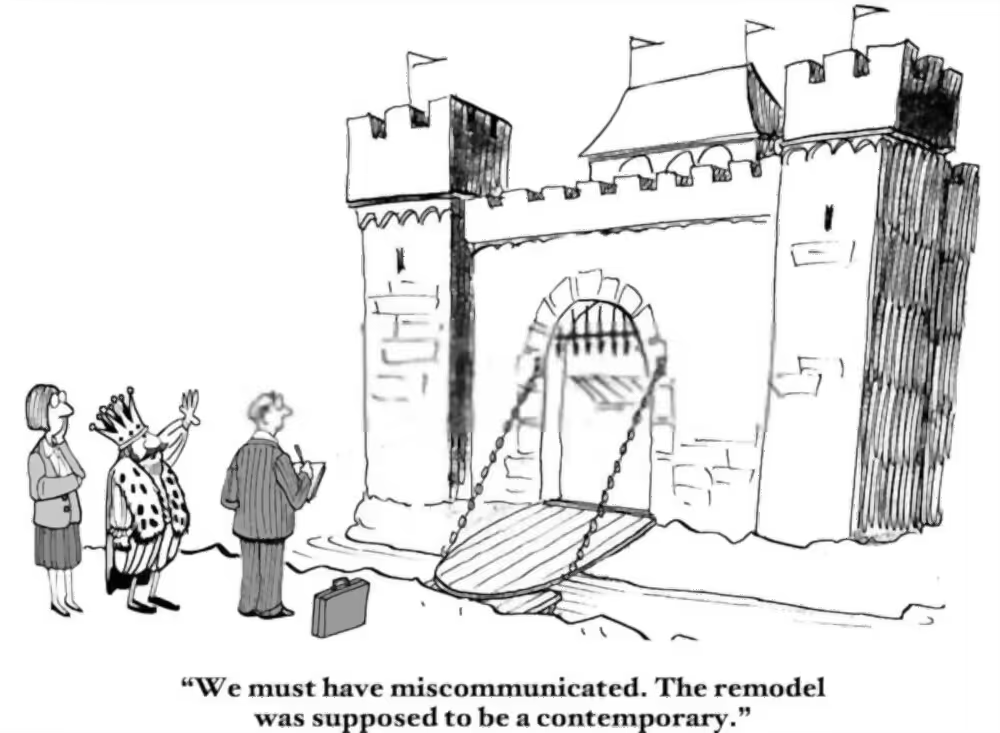Miscommunication – if not handled well, may become quite synonymous with complication. Many instances went down in history where, if simply a blunder hadn’t occurred, the story would’ve been different. Take for instance the unopened message in a battle fought between the Americans and the British. A spy had tucked a note in a British soldier’s pocket. This note revealed the whereabouts of the Americans. The note was never opened and was only found after the Americans won the battle.
While we’re at no war, we might end up creating one if miscommunication found its way at work. The biggest issue? When your team benefits from this miscommunication, you may feel powerless to make yourself understood. Recognizing some of the most common causes of miscommunication at work might play the upper hand in avoiding unwanted situations.
Causes of miscommunication at work
1. Missing out on context
When a file needs to be circulated, the context includes which file, when and where it needs to be delivered, as well as who is responsible for circulating it. One such mistake was made by the organization Yellow Pages, when it incorrectly marketed the Korean meal Bibimbap, by depicting noodles rather than rice, in one of their ads. The ad creator's lack of cultural context resulted in a negative moment for Yellow Pages.

To avoid confusion, employees working on a specific project should be given adequate opportunity to ask questions and assess their work. The managers need to allot dependencies, on a single platform, to each employee. This will give you a one-view of all the employees’ tasks. That means an advanced platform must be in place to bridge these communication gaps.
2. Making hasty assumptions
This is one of the most common causes of miscommunication at work. Assumptions in internal communication occur when some things are assumed to be true, but never verified. We tend to assume we already know what the other person is intending to say. It’s the same story as making an assumption about what a person intends in an email or text message, without actually looking for context.
Accepting something as true without proof, frequently on the basis of limited (or even incorrect) information. Bad things happen when team members make assumptions without seeking clarity.
A good way to tackle this would be to confirm what you’ve heard and make precise use of your words. Supposedly, instead of “We have a meeting this weekend at the office.” one may say “We have a meeting on Saturday afternoon in the conference room at the office.” Assumptions at work points us towards the next, common cause of miscommunication at work.
3. Falling short of active listening
One of the main causes of miscommunication at work is inactive listening. While we pretend to actively listen to what our colleague has to say, we are mostly too preoccupied with planning our own response. Active listening entails paying great attention to what the other person is saying, and only then interpreting what you've heard.
Are you listening to notice when there is a pause in the conversation... so you may speak? This is known as "listening to talk," and it is the polar opposite of active listening. Active listening necessitates complete concentration in order for you, the listener, to comprehend and successfully respond to what the other person is saying.
Focus on the current discussion and avoid unnecessary disruptions such as checking your phone, texting, etc. To confirm what you've understood from a conversation is to just....well, confirm. After your co-worker has finished talking, you may want to ask "So, what I hear you say is.." or "From what I'm understanding, you need me to..." This lets you verify and summarise the information you've heard.
4. Loss of employee productivity and motivation
Despite the skills and abilities, employees who are demotivated may sometimes feel unrecognized which can happen due to the cause of miscommunication at work. This often costs an employee to lose productivity, ignoring open lines of contact rather than working towards the advancement of the organization.
Overall productivity might be restored by reevaluating company culture and considering what it takes to create a collaborative work environment. Businesses might need to have a well-suited system that encourages creative nudges and reminders on a particular task. This way, one makes sure of their people being personally committed to work with a positive attitude.
5. Absence of leadership
Employees look up to their supervisors for guidance in the workplace. Poor leadership communication may result from managers' inability to answer inquiries or clarify issues, leaving their staff even more puzzled than before which can be one of the main causes of miscommunication at work. Because of this ambiguity, the employees may end up passing contradictory signals to each other.
Upper management staff may overcome this drawback by monitoring the team as a whole and identifying the blockers in a project. This may be further improved by extending a helping hand to the team, with a few suggestions on their way out of the tunnel.
6. Poor medium of internal communication
When read aloud, even a simple word like "no" might be construed in a variety of ways which can inturn become one of the causes of miscommunication at work. Verbal communication is better at conveying distinct meanings. Written messages are clear only when they are precise.
Emojis, which may be appropriate in some work environments, are one possible approach. It's also appropriate for more casual emails. Email, Slack, virtual huddles are some of the most common means of internal communication at the workplace which can help avoid internal miscommunication.
After the pandemic, 88 percent of worldwide firms offered employees the option of working remotely. And so, setting guidelines and choosing the right communication channel is crucial to avoid the hassle of internal miscommunications.
How does peopleHum play a role?
Huddle - peopleHum's special integrated module diminishes all the causes of miscommunication at work. An ideal one-view of all your employees' tasks and dependencies are managed with a few simple clicks on your device.
At the times of hurdles in a project, a manager or supervisor may instantly suggest a way out with a quick comment. You get to boost productivity by virtually nudging your employees for an update on a project, or to encourage their motivation in the era of remote work.
These aspects leave no space for miscommunications to land where they aren't invited. Register with us to know we can help boost your internal communication and people strategy. Or learn more about peopleHum with a free seat at our demo.





































.avif)












